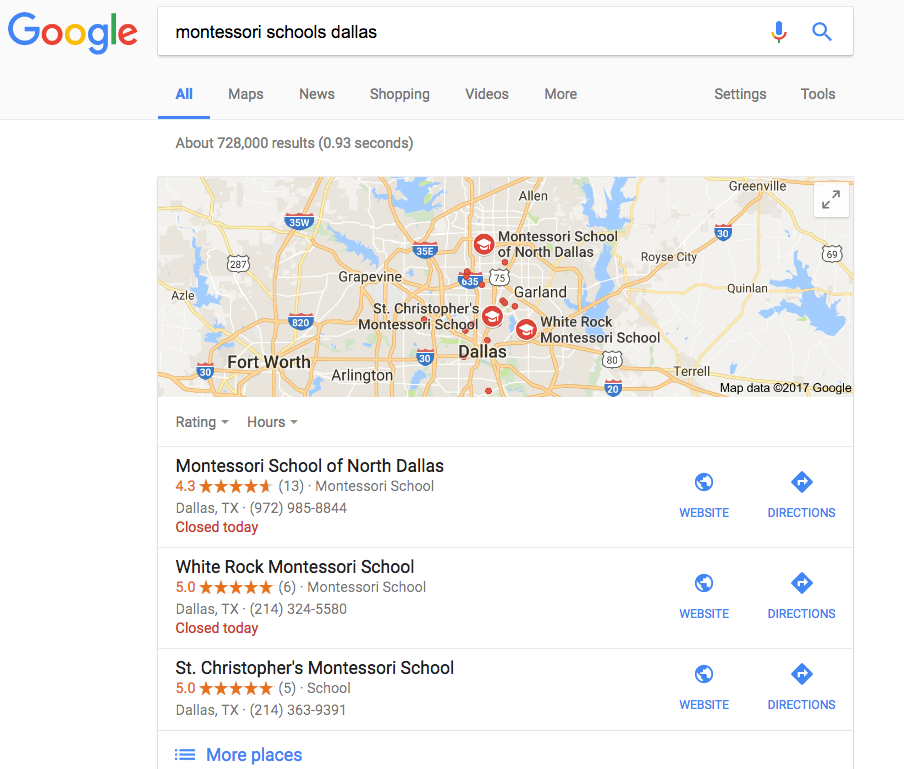Beyond bumper stickers, what can you do to make sure that you’re getting exposure for your Montessori school to prospective parents?
It’s not enough to build a great school. You’ve also got to market it, too. But, you’re an educator, not a marketer. You’re not sure how to attract prospective parents to your great program, although you know they’ll love it once they finally get what you’re doing.
If you’re strapped for marketing ideas, you’ve come to the right place. Let’s dive right in and look at four great ways you can get the word out about your awesome school.
[content_upgrade cu_id=”18790″]Here’s an additional list of ways you can market your school to prospective families. Check it out![content_upgrade_button]Click Here[/content_upgrade_button][/content_upgrade]
1. Create a School Information Packet
First things first, create a information packet for your school. This packet should be geared toward prospective parents who have little to no prior knowledge of the Montessori method. Assume that the recipient has never even heard of a Montessori school.
How can you describe your school in a way that quickly helps prospective parents understand what you do?
Some key topics to touch on include:
A quick and easy definition of Montessori education
Your school’s mission statement
What makes your school special (in contrast to the area)
Any special programs
It’s also a good idea to include parent testimonials in your information packet. Handpick happy parents who can serve as good ambassadors for your school.
Tell the story of your school’s successes. Include case studies that show a student’s progress (with the parent’s permission). You can even share the story from the parent’s point of view, documenting their hesitations and showing how they now feel after enrolling their child in your school.
Be sure to include photos (with an emphasis on diversity to show your inclusiveness).
You will use these packets to promote your Montessori school at in-person events. I also recommend handing them out to local offices that cater to your prospective families, including real estate agencies, pediatricians, dentists, after-school programs, and more.
Also include this packet as a downloadable PDF file on your Montessori school website. This way, prospective parents who find you through search engines can also have a printable packet that they can read over at their leisure.
2. Word of Mouth Marketing
Word of mouth marketing is one of the most powerful forms of marketing there is. People trust other people, especially people that they know.
This is why you should definitely empower your current families to market your school for you. And you’ll do that with a referral program.
A referral program for a private school may sound weird, but it works. Consider creating and implementing one for your school. This type of incentive-based program will allow you to positively motivate the parents to refer other families in their networks.
Here’s how a referral program can work: You offer a tuition credit or discount for the referring family. This credit could be anywhere from $50 and up, but you definitely want to make the credit enticing enough to be worth a family’s time and energy.
Of course, you’ll definitely want to put conditions on the referral. A few examples of conditions include:
Limiting the incentive to one credit per family
Withholding the credit until after the referred student has attended school for three months
Making it mandatory that the referring family’s name be listed on the application
You’re not limited to any of these conditions. If you find that one family refers quite a few students to your school, it may make more sense to keep the incentives rolling.
3. Advertise on Facebook

Facebook is one of the true MVPs of marketing. With its sophisticated marketing tools, smaller schools can speak directly to their intended audience.
If you’ve never worked with Facebook ads before, it can feel a little daunting. While there is a little bit of a learning curve, it’s pretty user-friendly once you get the hang of it.
Here’s how it works:
Step 1: Figure out your intended purpose for the ad. Ideas include gaining exposure for your school from people who’ve never heard of it or focusing exclusively on people who’ve visited your site within the last 90 days (if you’d like to learn more about this, I can create a separate tutorial for it).
Step 2: Set a specific budget for your Facebook ads. Your budget can be as little as $5 a day, and you don’t have to run the ads every single day. It’s totally up to you how often you schedule the ads.
Step 3: Create the ad. One of my favorite tools for creating an ad from scratch (even if you don’t know anything about graphic design) is Canva. They offer a library of professionally designed ads that you can use on Facebook—many of which are free.
Step 4: Link the ad back to your website. But not just the “home page” of your website. You should link to a specific landing page for the ad that introduces prospective parents to your school—much like how you created an information packet. Think of this landing page as a website version of your information packet.
Step 5: Target prospective families. Here’s where Facebook really shines: You can target who will see your ads down to an almost creepy level. Age, location, salary, gender, behavior—you name it, you can target it. Once again, if you’d like a more thorough tutorial on this, I’d be happy to write it up. But feel free to go through Facebook and see how targeted you can get with your viewer parameters.
Remember that your ad doesn’t have to be fancy to be effective. Your goal is to introduce prospective parents to your school and get them to the next step (i.e. setting up an appointment to tour your school or visiting an open house).
4. Create a Website
In addition to a landing page, you definitely need a website. Your website is how prospective parents will find you through Internet search.
Many families start searching for new schools via the Internet. Think of the parents who are new to the area, or the ones who are unhappy with their child’s current school. When they look for a new school, they may ask around, but they’ll definitely search the Internet, too. Your school should be one of the first schools that they find.
Because the Internet is a big place, it’s harder for most schools to get found by a prospective parent’s search for basic terms like “montessori”. That’s the bad news. The good news is that it’s a whole lot easier to get found for local searches (i.e. “Montessori schools Dallas”).
After you create your website, you’ll want to focus on optimizing your site for local search. Here are three steps to do that:
Include your school’s name, address, and phone number (or NAP, for short) on every page on your website. It’s easiest to do this in the website’s header or footer.
Get listed on Google My Business. This allows you to claim your local listing and get found on Google maps. Plus, your name, address, hours of operation, reviews, and more will have a greater chance of getting promoted in the local snack of Google search.
Blog. Blogging creates fresh content that search engines like Google love. Regularly maintaining a blog can push your website above other nearby private school websites.
Final Thoughts
Keep your chin up. Although it’s hard at first to gain exposure, you’ll eventually build up the school that you’ve been dreaming of. Use these tips to get on the radar, and continue to focus your efforts on word of mouth marketing in particular. The more you can encourage parents to market for you, the greater your reach.
[content_upgrade cu_id=”18790″]Don’t forget to check out these six additional ways to get found by prospective parents.[content_upgrade_button]Click Here[/content_upgrade_button][/content_upgrade]


